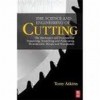- Out-of-Stock



No product available!
SparkFun SEN-10736 - 9 Degrees of Freedom - Razor IMU, 28mm x 41mm, RoHS
No product available!
Module with e-Paper display, diagonal 7.5" and resolution 640x384 px. Communication via SPI interface. Waveshare 7.5inch e-Paper HAT (C)
No product available!
No product available!
No product available!
Nylon XT60 Connectors Male/Female (5 pairs) GENUINE
No product available!
No product available!
No product available!
No product available!
PCB with programmed system for 4-channel thermostat with alarm. AVT5589 A +
No product available!
Assembled, winding timer with acoustic siren. AVT3143 C
No product available!
No product available!
High voltage differential probe. It is characterized by good measurement parameters: with a 100 MHz band and an operating voltage up to 5600 V. The probe has two attenuation factors: 200X and 2000X. Micsig DP20003
No product available!
No product available!
No product available!
No product available!

